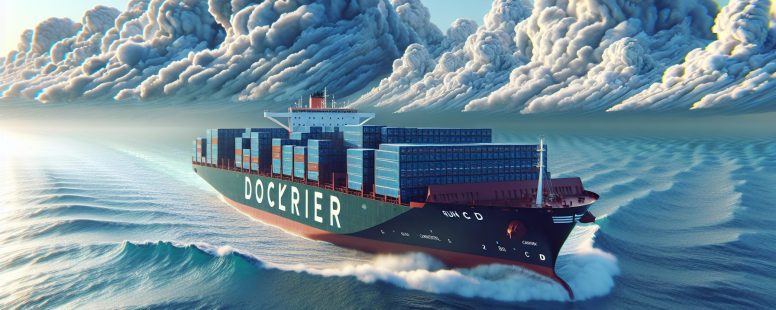Understanding the Difference: RUN vs CMD in Dockerfile Explained
You’re knee-deep in the world of Docker, and you’ve stumbled upon two intriguing commands: RUN and CMD. They seem similar at first glance but are they really? Understanding these differences can be a game-changer for your workflow.
RUN or CMD – which one should you use when creating your Dockerfile? It’s not always an easy choice. Let’s jump into this topic together to clear up any confusion and make sure that next time, you’ll know exactly what command suits best for each situation!
Understanding Dockerfile Instructions
In the area of Docker, a Dockerfile serves as your map. It’s essentially a text document that contains all the instructions and commands you’d manually type in to create an image.
What Is a Dockerfile?
A Dockerfile is simply defined as an automated sequence of Linux commands to build up an image. Think of it like constructing something from Lego – each block represents a command that collectively creates the final product, your docker container. Each line or instruction inside this file forms its backbone by specifying what base image you’re using (from), which ports need exposing (expose), copying files into it(copy) among other tasks.
To put it another way, imagine orchestrating your own play where every actor knows their role thanks to cues specified in advance; those ‘cues’ represent lines within our script known as “dockerFile”.
Key Commands in Dockerfile
Delving deeper into these sequences reveals two pivotal players: The RUN and CMD commands.
- RUN– A key feature here includes executing any command(s) in new layer on top of current images then commits results; hence forming new ones if successful.
2.Fascinatingly enough though there exists one more such player aptly named “CMD” who provides defaults intended for execution containers when running them without specifying explicit commands themselves.
These contrasting roles both crucial yet uniquely different make exploring through maze-like architecture significantly easier than before while also keeping things organized efficiently so let’s break down how exactly they function together shall we?
Exploring the RUN Instruction
Following on from our overview of Docker commands, we’ll now dive deeper into understanding the role and application of one key instruction: RUN.
Purpose of the RUN Command
In your journey with Dockerfiles, you encounter various instructions. Each holds a specific purpose in shaping an image. Among these, it’s crucial to recognize what function RUN plays. The primary objective behind using this command lies in executing any shell-based operations during image building. You use RUN when there’s necessity for creating layers that need system modifications such as installing software packages or modifying file permissions.
For example:
Consider having to install Node.js within a layer; by leveraging RUN, you’d add something like below to your Dockerfile:
# Installing nodejs.
RUN apt-get update && \
apt-get install -y nodejs
With this line included, upon running ‘Docker build’, each time there’s interaction with ‘apt’, new changes get committed onto an intermediate container which then forms part of the next steps within another temporary space created via docker daemon!
Common Uses of RUN
Next up is identifying how often does one make use of RUN. Given its pivotal nature in generating images through a series scripts run at once (often referred to as “chaining”), it finds frequent usage amongst those involved heavily around scripting tasks related directly towards server setup/configuration purposes etc., thereby making itself integral over processes spanning across environments differing vastly owing their unique setups/configurations respectively! For instance;
- To generate code dependencies,
- Perform text manipulation,
- Setup environment variables,
Exploring the CMD Instruction
Having covered the RUN command’s utility, let’s now shift focus to another crucial Dockerfile instruction – CMD.
Purpose of the CMD Command
The function of a Dockerfile’s CMD lies in its ability to specify defaults for an executing container. It provides instructions that become part and parcel of all running containers built from your image, unless explicitly overridden by operators during launch. In other words, if you view a Docker container as a ship setting sail on computational waters, then consider CMD as its default navigational route – it outlines where this vessel goes after leaving port. But, should need arise (i.e., specific user requirements), these predefined coordinates can be altered at runtime.
This dynamic nature distinguishes CMD significantly from RUN. While both are essential building blocks within any effective dockerized environment setup strategy — each serving their unique roles — they cater to different phases: one focuses on construction (RUN) while the other directs operation (CMD). Understanding when and how best to use them boosts overall productivity in managing Docker environments.
Common Uses of CMD
As noted earlier about directive navigation paths or routes metaphorically associated with ships—much like captains use maps—the same logic applies here; commonly applied uses govern how systems execute using dockers via specifications coded into those images’ parameters through this particular instruction set:
- Setting Default Shell: Specifying shell processes is often executed using ‘cmd’. For instance:
FROM ubuntu
COPY . /app
WORKDIR /app
RUN make app.js
CMD [ "node", "app.js" ]
In this example above we see ‘Node’ being used alongside file name ‘App.Js’, making Node run App.JS whenever our newly created Ubuntu-based Image comes online.
- Launching Applications: Frequently found among applications hosted inside containers needing auto-boot during runtime,
CMDinitiates them. - Debugging: It’s also used for debugging containers by starting a shell process whenever container runs.
Remember the power of CMD lies in its ability to provide default executable instructions — much like a navigational guide setting the direction unless explicitly overridden at runtime.
Differences Between RUN and CMD
Building upon the previous section, let’s further dissect the dissimilarities between Docker’s RUN and CMD commands. These two directives play distinct roles in a Dockerfile, though they may appear similar at first glance.
Execution Time Differences
When it comes to execution time, there lies a stark difference between these two directives. The ‘RUN’ command takes center stage during image building – consider it as an artist painting on canvas before an exhibition opens up for visitors. Any instruction given via this command is executed while your Docker Image is being built.
On the other hand, instructions provided through ‘CMD’ come into effect only after you’ve started running a container from that particular image—sort of like adjustments made once spectators start viewing art pieces during an exhibition!
Impact on Image and Container
The second crucial area where ‘RUN’ differs from ‘CMD’ centers around their impact on images versus containers respectively.
Consider when using ‘RUN’, every instance modifies your existing docker image by adding another layer onto it; much like applying additional layers of paint adds depth to artwork! This effectively creates new intermediary images which can increase storage requirements but also speeds up subsequent builds if those steps don’t change.
But,’CMD’ doesn’t affect your base image size or composition directly since its primary function isn’t creating any additional layers within your docker file—it’s more about specifying what defaults should be used when launching containers derived from said base-image!
Best Practices for Using RUN and CMD
To leverage Docker’s capabilities effectively, it’s crucial to understand when to use the different commands. Given that you’ve already learned about what each command does in a Dockerfile, let’s now investigate into the best practices around using these two vital directives: RUN and CMD.
When to Use RUN
RUN is your go-to instruction whenever there are steps needed during image creation. This includes any operations relating directly or indirectly towards configuring the environment of your application within an image. For instance:
- Installing necessary packages:
RUN apt-get update && apt-get install -y package-name - Setting up directories for later usage by applications:
RUN mkdir /app
Remember though! Each time you include a new “Run” statement, it adds another layer onto your docker image as per Union File System (UFS). So keeping them minimal will help reduce size and speed up build times.
Also consider chaining multiple related actions together with conjunctions like ‘&&’ instead of spreading them over separate lines; this helps minimize layers too!
Consider making good use of cache while building images through intelligent ordering of instructions such that more frequently changed ones come last – helping save significant amounts on build times due to caching efficiency from prior builds where most parts remain unchanged.
When To Use CMD
CMD serves as default parameters which get executed when launching containers from an Image built outta respective Dockerfile but don’t alter actual content inside said Images.
Here’re few instances wherein employing ‘CMD’ might be beneficial:
- Designating entry-point applications at container start-up,
- Overriding defaults via CLI inputs while invoking ‘docker run’,
An important aspect here involves its overriding behavior especially if defined multiple times within same file since only final one gets recognized! Hence careful placement proves essential so no previous configurations accidentally override desired settings unknowingly .
Finally ,while setting shell form e.g.,CMD ["param1","param2"] ensure it’s written in JSON format to avoid any ambiguity for Docker daemon while interpreting instructions, aiding smoother operations and mitigating chances of potential errors.
Conclusion
Having dissected the Docker commands RUN and CMD, you’re now armed with knowledge to enhance your dockerfile creation. Remember, it’s all about when and how these instructions are executed. The power of the RUN command shines during image building; optimize its usage for a streamlined build process by leveraging cache smartly and ordering wisely.
As for CMD? It’s like your ship captain at container runtime – setting defaults yet offering flexibility via overrides from CLI inputs. Use it judiciously while crafting entry-point applications or defining default shells but be cautious not to unintentionally override important parameters.
Your journey towards efficient Docker operations is well underway! Continue exploring, experimenting, learning… because in this world of containers – that’s what keeps you sailing smoothly!
- Alternatives To Docker Desktop Extensions - November 26, 2025
- GPU Versus CPU: Understanding the Key Differences - November 26, 2025
- Twin Versus Twin XL: Understanding the Differences - November 26, 2025







